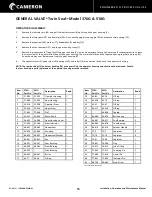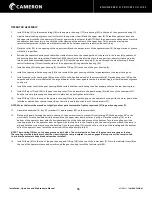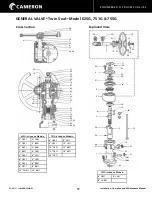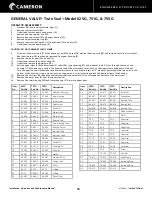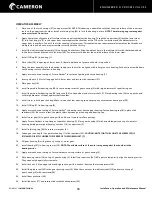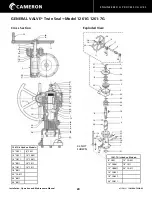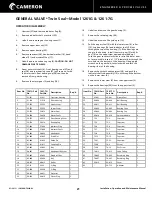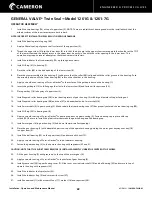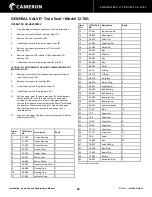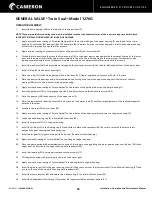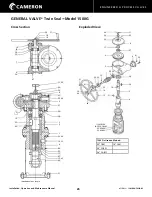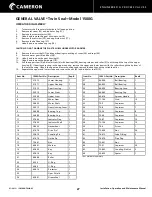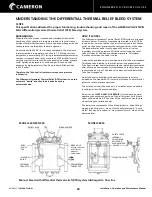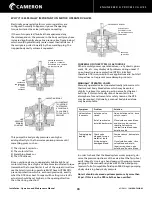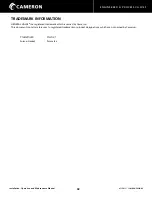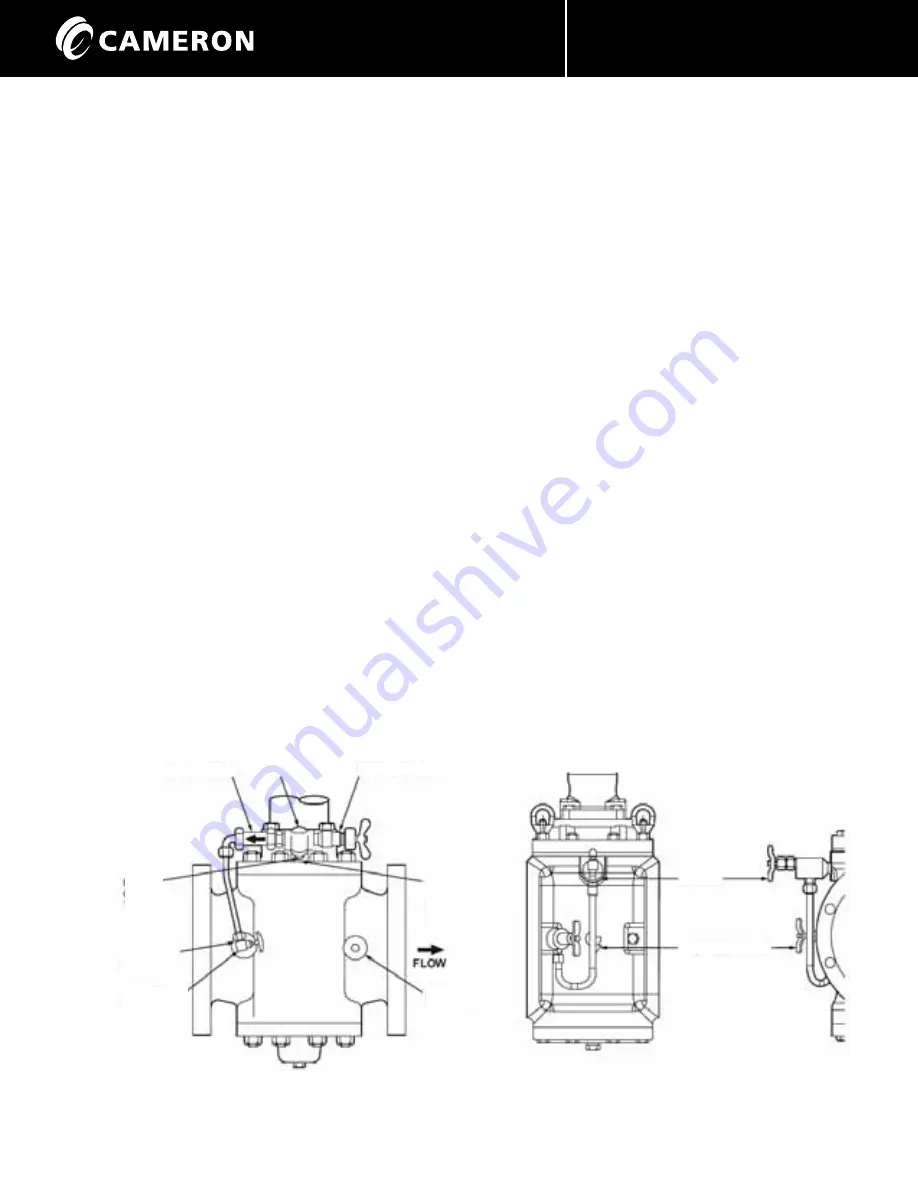
E N G I N E E R E D & P R O C E S S V A L V E S
07/2011 / IOM-GEN-TWIN-03
29
Installation, Operation and Maintenance Manual
UNDERSTANDING THE DIFFERENTIAL THERMAL RELIEF BLEED SYSTEM
SCOPE
This specification addresses the proper functioning, trouble shooting, and repair of the GENERAL VALVE TWIN
SEAL differential (pressure) thermal relief (DTR) bleed system.
BACKGROUND
When the Twin Seal valve is seated and completely filled with a
liquid, any slight variation in temperature due to the sun’s rays or
ambient thermal fluctuations will cause significant changes in body
cavity pressure resulting from thermal expansion.
Valves filled with 330 API fuel oil have exhibited a 75 psi increase
in pressure with a temperature rise of only 1°F. Putting this into
perspective, a normal daily 30°F swing in ambient temperature may
cause an increase of body cavity pressure of 2250 psi. While results
vary under actual service conditions depending on media, pressure
vessel rigidity, and presence of entraned gas it is known that
dangerously high pressures will build up in liquid filled positive
shut-off valves.
Therefore, the Twin Seal in liquid service requires a pressure
relief device.
The Differential (pressure) Thermal Relief (DTR) system is one such
automatic “device” and should be included on every
automated valve.
HOW IT WORKS
The Differential (pressure) Thermal Relief (DTR) system is arranged
as shown below. A variety of components are used in the DTR. As
shown below, one can see that the relief valve mounted at the tee
outlet on the bonnet pressurizes the upstream throat of the valve.
The standard relief valve is set to open at 25 psi on all valves
regardless of working pressure. With the valve closed, the relief
valve will open at 25 psi above upstream pressure. This system
functions only when the valve is closed.
A manual body bleed valve is included on the Twin Seal as standard.
This bleed valve installed in the relief system is openedafter the
Twin Seal is closed. Seal effectiveness can be immediately evaluated,
after allowing a few seconds for stabilization of cavity volume due
to entrained air or gas. The bleed valve must be closed before the
Twin Seal is reopened.
An isolation valve installed in the upstream throat tap is also
included on the standard DTR. It must be left open to permit relief
system to relieve pressure upstream.
The isolation valve will be used only for maintenance and trouble
shooting which will be explained later.
Valve is to be
CLOSED ONLY FOR REPAIR
. If closed during normal
operation the automatic portion of the relief system (relief/check
valve) will be defeated. (The outlet of the relief valve would close
when closing the isolation valve).
The remaining components of the bleed system i.e., tube fittings,
nipples, pipe fittings etc., are not functionally involved in “how it
works” but may be involved in “why it doesn’t work” which will be
discussed later.
MODELS 400/800/900
MODELS 8800
Manual bleed with differential thermal relief (DTR) system discharged to flow line
MANUAL BLEED
TEE
RELIEF VALVE
BODY
CAVITY
TAP
ISOLATION
VALVE
UPSTREAM
THROAT TAP
BLEED HOLE
located in bonnet
on all valves
except as
noted below
DOWNSTREAM
THROAT TAP
SAFETY CHECK
INTEGRAL
CONTAINING
RELIEF AND
MANUAL BLEED
VALVES
ISOLATION VALVE

